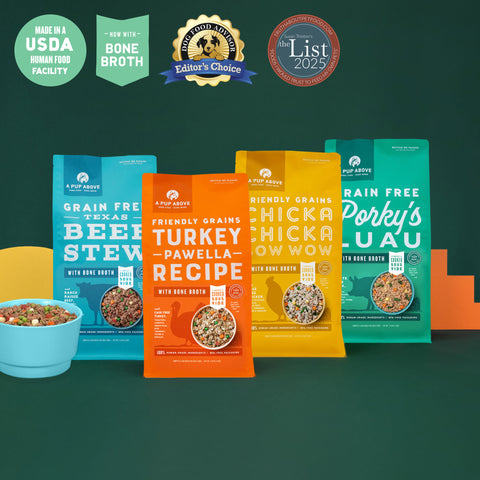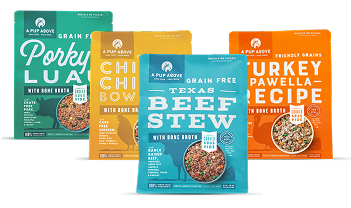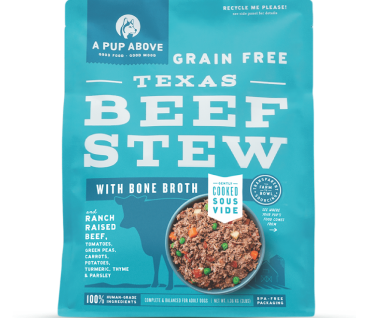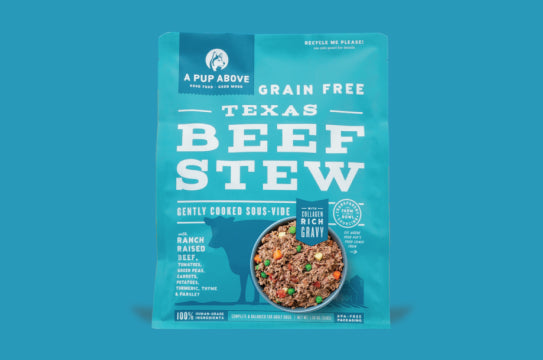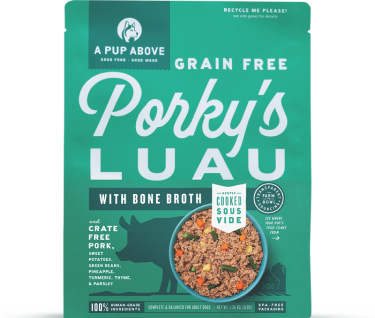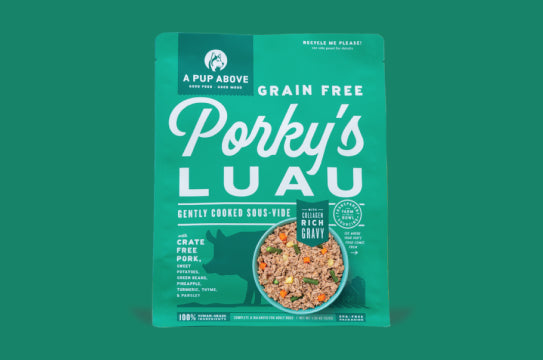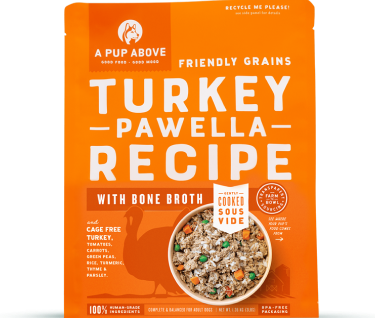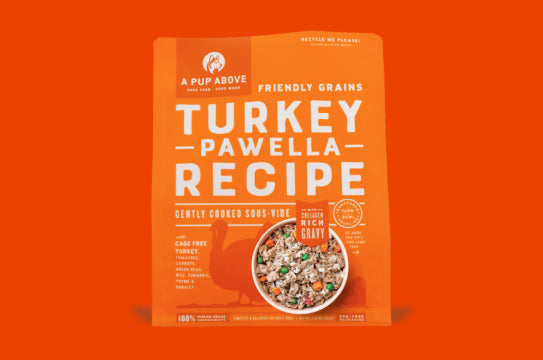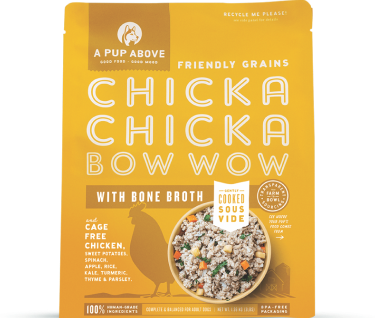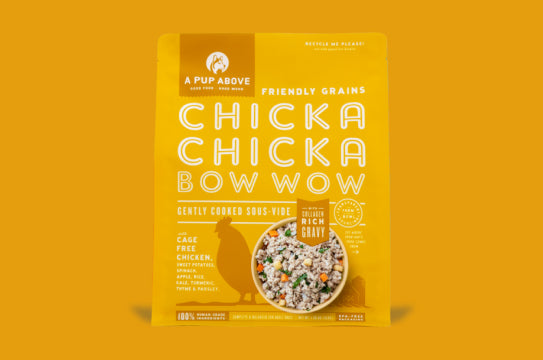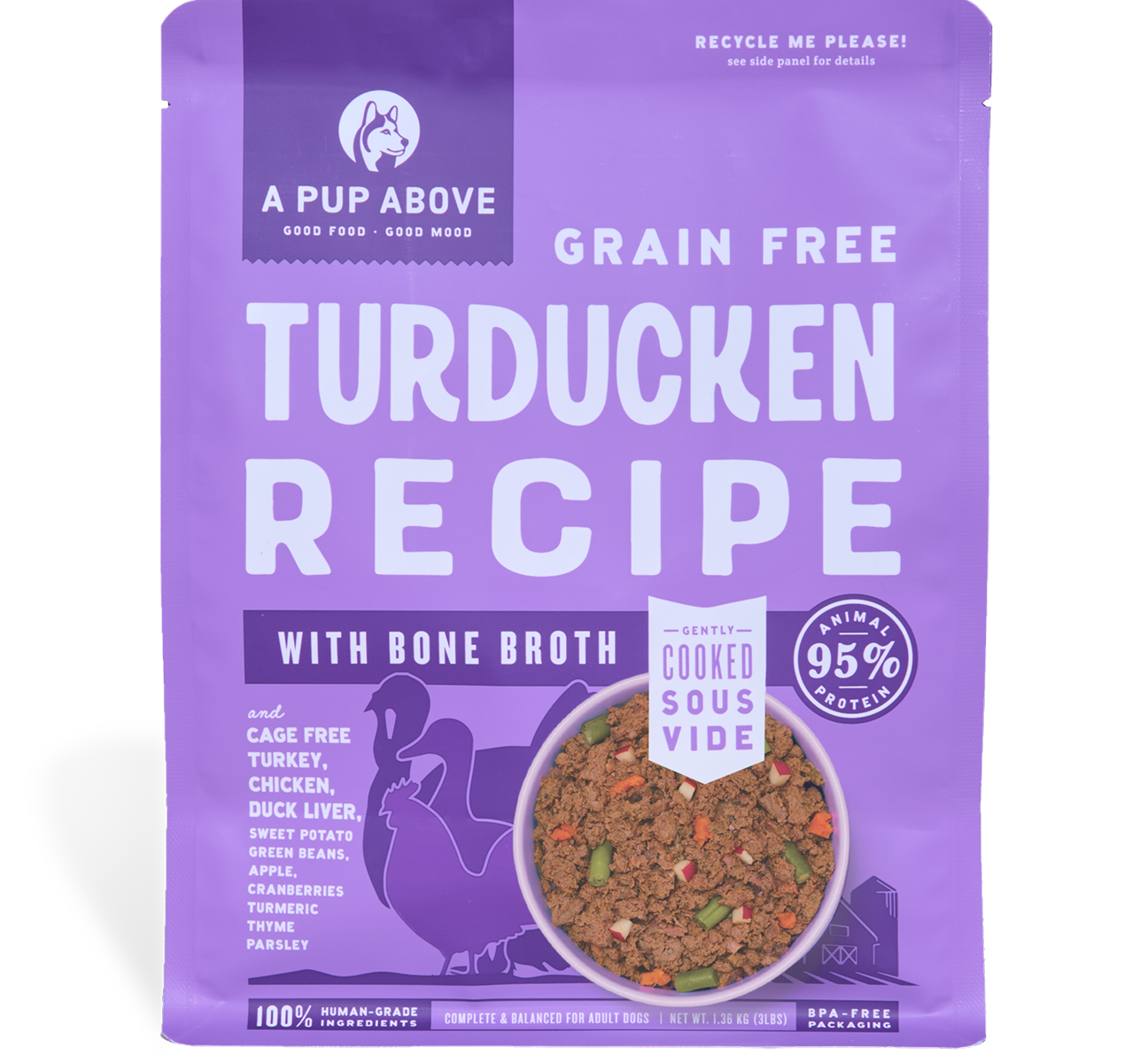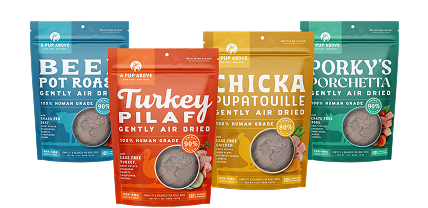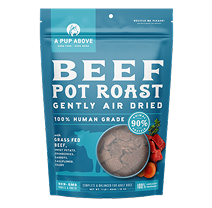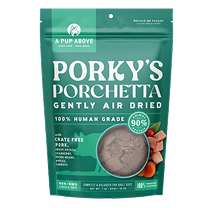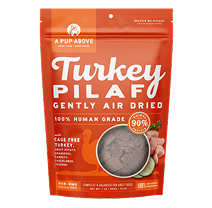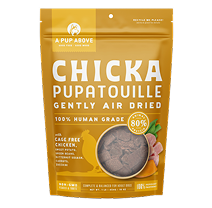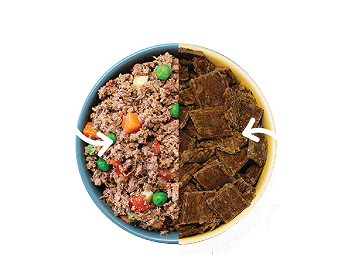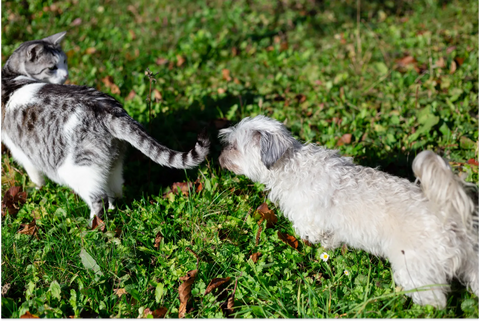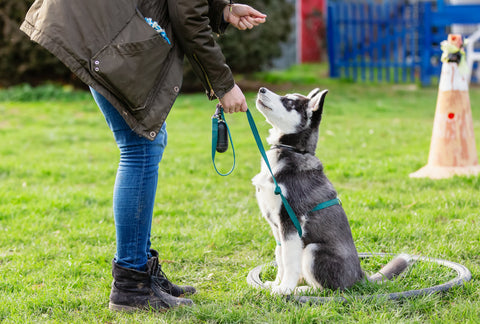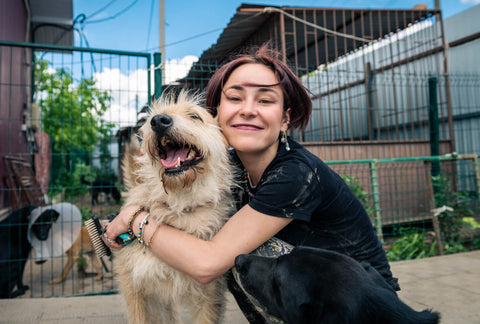
Toy Fox Terrier: A Quick Information and Care Guide
Table of Contents
- TOY FOX TERRIER: A SNAPSHOT
- WHAT ARE THE NUTRITIONAL NEEDS OF TFTS?
- WHAT ARE THE HEALTH AND WELLNESS NEEDS OF TFTS?
- WHAT ARE TFT TRAINING AND SOCIALIZATION NEEDS?
- WHAT ARE TFT GROOMING BASICS?
- WHY IS HUMAN-GRADE FOOD GOOD FOR TOY FOX TERRIERS?
- Toy Fox Terrier Feeding Chart
- CHERISHING EVERY MOMENT WITH YOUR TOY FOX TERRIER
The Toy Fox Terrier, with its perky ears, intelligent gaze, and vivacious spirit, is a dog breed that warms countless hearts. But, as with any pet, understanding and catering to their unique needs is vital to ensure their well-being.
As a brand built from a heartfelt mission to provide quality, palatable food for our pets, A Pup Above emphasizes the importance of quality care, beginning with knowledge. This guide offers an insightful look into the world of Toy Fox Terriers, highlighting their distinct traits and, most importantly, their nutritional needs, a subject close to our hearts.
TOY FOX TERRIER: A SNAPSHOT
- Origin and Historical Background: The Toy Fox Terrier, often referred to as TFT, has its roots in the United States. Born from the larger Smooth Fox Terrier, this mini version was specifically bred for its diminutive size and increased agility, making it a popular choice for circus performances in the early 20th century.
- Physical Characteristics: Typically standing eight to 12 inches tall and weighing between three and seven pounds, the TFT showcases a sleek, shiny coat. Predominantly white, it sports patches of black and tan or chocolate, offering a stark contrast that highlights its keen eyes and pointed ears.
- Personality Traits: Their history as circus performers hints at their character. Toy Fox Terriers are bundles of energy, loyal to their core, and highly intelligent. These traits make them excellent companions for families and individuals alike, eager to engage in play and showcase their acrobatic talents.
WHAT ARE THE NUTRITIONAL NEEDS OF TFTS?
Much like us, our canine companions thrive best when their diet aligns with their specific needs. Especially for small breeds like the Toy Fox Terrier, the nutritional balance is crucial. Their energetic disposition demands food that fuels their zest for life.
Enter the world of gourmet, gently cooked meals. At A Pup Above, we firmly believe in the virtues of sous-vide cooking, capturing the essence of flavors while preserving essential nutrients. Palatability plays a pivotal role for breeds with discerning tastes, such as the TFT. Their food should be as delicious as it is nutritious.
Another factor to ponder upon is the incorporation of bone broth, a nourishing addition that is delicious and provides a natural source of minerals. Bone broth can be especially beneficial for breeds like the Toy Fox Terrier, given its hydrating and joint-supporting properties.
Lastly, and of utmost importance, is the commitment to food safety and quality. We advocate for meals crafted with love, care, and the highest safety standards, ensuring our Toy Fox Terrier friends receive the best on their plate.
WHAT ARE THE HEALTH AND WELLNESS NEEDS OF TFTS?
With their spirited demeanor and vivacity, Toy Fox Terriers bring life to any household. However, beneath that lively exterior, it's crucial to recognize and address potential health issues to ensure their optimal well-being.
Common ailments for TFTs include patellar luxation, dental problems, and allergies. While many of these can be genetic, a proactive approach can significantly reduce risks and complications.
Ensuring they receive regular veterinary check-ups is essential. Not only does this help catch early signs of potential issues, but it also offers peace of mind to pet parents. With their boundless energy, it's equally important to establish a safe exercise routine that challenges and engages them, preventing potential joint issues in the long run.
In the realm of pet health, the message is clear: prevention is always better than cure. It's a sentiment A Pup Above deeply resonates with as we advocate for holistic well-being.
WHAT ARE TFT TRAINING AND SOCIALIZATION NEEDS?
The agile and intelligent nature of Toy Fox Terriers means they are quick learners, but their strong-willed nature can sometimes present challenges. Early training and consistent socialization are key.
For TFTs, positive reinforcement techniques work wonders. Rewards, both in terms of affection and nutritious treats, can encourage good behavior.
Keeping the tone friendly and informative is essential; every dog has its own pace and personality. Some might be more receptive to certain training methods, while others might require a bit more patience.
On the other hand, socialization isn't just about exposing your TFT to new environments but also about creating positive associations. Introducing them gradually to various stimuli, from other pets to diverse surroundings, ensures they grow into well-rounded adults.
WHAT ARE TFT GROOMING BASICS?
The Toy Fox Terrier's sleek coat might give the illusion of being low maintenance, but like any breed, they have specific grooming needs. Regular brushing, once or twice a week, can keep their coat looking pristine and reduce shedding.
It also offers a perfect opportunity for bonding, turning grooming sessions into moments of warmth and connection. While not frequently required, bathing should be done with gentle, dog-friendly products to maintain their skin's natural oils.
Pay special attention to their nails, ears, and teeth. Regular nail trimming prevents overgrowth and associated discomfort while cleaning their ears and teeth can stave off potential infections.
Maintaining a consistent grooming routine ensures your TFT looks their best and promotes their overall health and wellness. When they shine on the outside, they thrive on the inside.
WHY IS HUMAN-GRADE FOOD GOOD FOR TOY FOX TERRIERS?
Navigating the pet food market can sometimes feel like navigating a minefield of choices. Amidst the jargon, one phrase often stands out: “human-grade.” But what does this truly mean, and why might it be worth considering, especially for Toy Fox Terriers?
In essence, human-grade dog food implies a quality of ingredients and preparation that would meet the standards set for human consumption. At A Pup Above, this isn't just a catchphrase — it's a mission. By ensuring meals are delicious and of the highest grade, we aim to reflect the love and care every pet parent feels for their dogs.
For the discerning Toy Fox Terrier, the difference can be palpable. The enticing aromas, rich flavors, and evident freshness can make mealtimes a celebration.
Beyond taste, the nutritional advantages are significant. Meals crafted from quality, recognizable ingredients tend to be more digestible, providing the energy and vitality that a Toy Fox Terrier needs.
Toy Fox Terrier Feeding Chart
Now you know how vital a nutritious diet is for your Toy Fox Terrier's health, but how much should you feed them? At what age does that change? And what's the scoop on treats?
Here's a detailed breakdown, keeping all their dietary needs in mind, from puppyhood through their golden years.
Feeding Guide by Life Stage:
- Puppies (under 1 year): Energetic little Toy Fox Terrier puppies need a diet that supports their rapid development and high energy. Choose high-quality, high-calorie puppy food that's formulated for small breeds to support their growth, ensuring a healthy weight. Look for food that includes fatty acids to promote a shiny coat and support brain development, crucial for these American-born, circus-performer descendants.
Amount of Food: Typically, your Toy Fox Terrier puppy will need about ¼ to ⅓ cup of high-quality kibble or fresh food per meal, served three times a day. Adjust based on their activity level and growing energy needs to prevent obesity and maintain overall health.
Snack Time: Integrating small, healthy treats into your puppy's diet isn't just tasty—it's essential for their training and mental stimulation. Consider veggies and fruits, which are great for hydration and boosting their immune system.
- Adult Toy Fox Terriers (1-8 years): As your Toy Fox Terrier matures, transition to adult dog food designed to maintain their energy levels and support a healthy lifestyle. The best food for these adult dogs will be rich in protein, free from fillers, and appropriate for their small size and activity level.
How Much To Feed: An adult Toy Fox Terrier usually needs about ½ to ¾ cup of food per day, split between two meals. Monitor their health conditions, particularly von Willebrand disease, which is common among small breeds, and adjust food quantity to maintain a healthy weight.
Tasty Extras: Enhance their meals with a variety of the best dog foods — consider grain-free options if your vet suggests it due to specific health issues. Supplementing with fish oil can continue to support their short coat and overall health.
- Seniors (over 8 years): Older Toy Fox Terriers require a diet tailored to their less active lifestyle but still focused on preventing health problems. Foods should support joint health, manage calories to avoid obesity, and maintain their immune system.
Feeding Amounts: Decrease portions to match their reduced exercise needs, helping maintain a healthy weight and overall health. Consider softer foods if dental health becomes a concern, ensuring they can still enjoy their meals.
CHERISHING EVERY MOMENT WITH YOUR TOY FOX TERRIER
With their sparkling personalities and zest for life, Toy Fox Terriers truly deserve the best — in care, training, grooming, and nutrition. As we've journeyed through their unique needs and attributes, one underlying theme is evident: the bond between a pet and their human is sacred.
And within that bond lies the responsibility to ensure the very best for our canine companions.
At A Pup Above, we're inspired daily by stories of love, care, and commitment between dogs and their families.
It's a reminder of why we began our journey — to serve pets meals that mirror the depth of our affection for them. Because every dog, from the vivacious Toy Fox Terrier to the gentlest of giants, deserves food that's crafted with love, safety, and an unwavering commitment to quality.
Sources:
Top 20 Smallest Dog Breeds | Forbes Advisor
Patellar luxation | Cornell University College of Veterinary Medicine
Top Stories
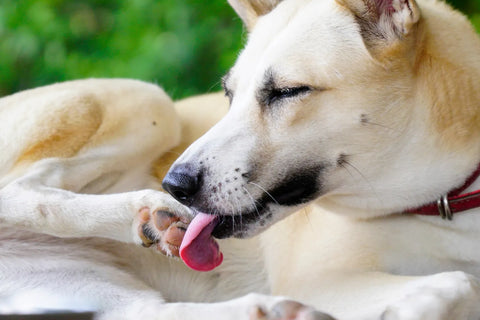
Why Do Dogs Lick Their Paws?

Why Do Dogs Whimper & Make Noises in Their Sleep?

Healthy Vet-Approved Homemade Dog Food Recipes

How To Cook Sweet Potatoes for Dogs
